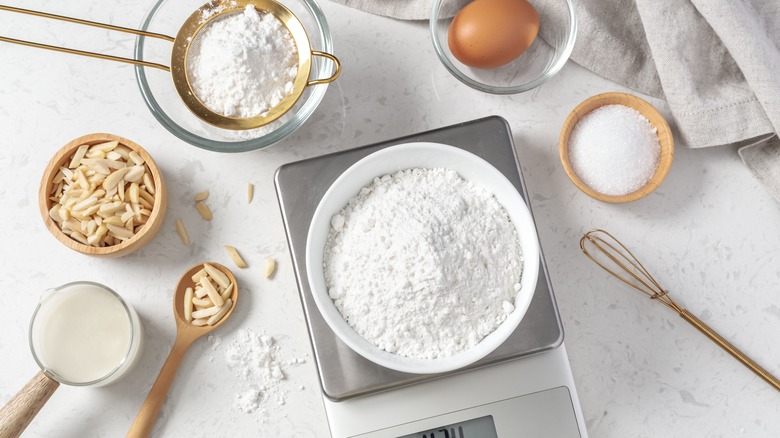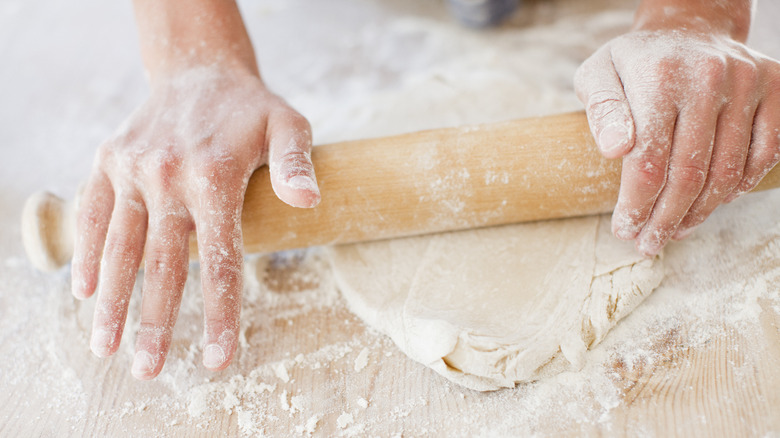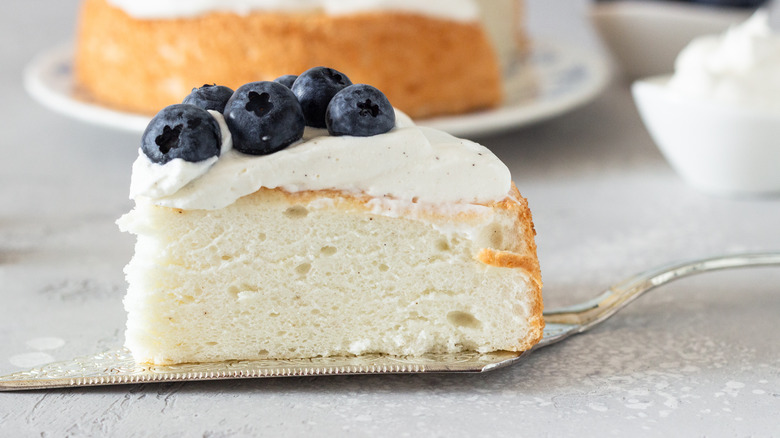The Best Substitute For Cake Flour Is Also The Easiest
You're probably familiar with the old adage that cooking is an art, but baking is a science. And anyone who has talked to a baker for long enough is likely to believe they have a "Lessons in Chemistry" level degree in chemical engineering — that's how much detail goes into the craft.
However, one topic that can really throw novices for a loop involves the many kinds of flour used in baking. While everyday Americans are partial to all-purpose flour, many baking recipes call for other types, like cake flour. Cake flour is lower in protein and gluten than all-purpose flour — two components that often yield a heavier, denser product — and so it produces a more delicate crumb. But if you don't have cake flour on hand, you can substitute all-purpose flour mixed with cornstarch. Simply measure out a cup of flour minus two tablespoons, and mix it with two tablespoons of cornstarch. You can prorate this ratio for any recipe with good success.
What is cake flour?
The production process of cake flour is quite interesting. Some varieties are made from high-starch, low-protein wheat, often referred to as soft wheat. However, other varieties are simply all-purpose flour with added starch. This added starch is essential for thickening the cake batter so that it swells, producing a final product with height and lightness. Adding cornstarch or other thickening agents like tapioca flour or arrowroot powder can help bridge the gap, although most people are likely to have cornstarch more readily available than the other two.
The source of your flour can also influence its protein content. It has been observed that flour from the Southern versus the Northern United States tastes different. This is due to the prevalence of soft wheat in the South, which has a lower protein content compared to the hard wheat found in the North. If you've ever wondered why Southern biscuits are so fluffy and delicious, it's because they're made with flour that is designed to enhance their lightness.
When should you use cake flour?
An easy way to understand different types of flour is to think of them as a spectrum. The three main workhorse types are bread flour, all-purpose flour, and cake flour. For hearty loaves of bread, you need high-protein flour made from hard wheat, like bread flour, which produces a chewy interior with a thick outer crust. For middle-of-the-road baking projects, all-purpose flour is useful. It's a blend of hard wheat and soft wheat flour.
Then there's soft wheat flour, or cake flour, ideal for lighter dishes. Chiffon cake, angel food cake, pound cake, cupcakes, sheet cake — most types of cake call for cake flour. But it's also suitable for biscuits, cheesecake crust, or English scones.
Some recipes might call for self-rising flour, which is different. This is essentially flour with added baking powder and salt. While it's also used for light baked goods, it shouldn't be interchanged with cake flour for optimal results.



